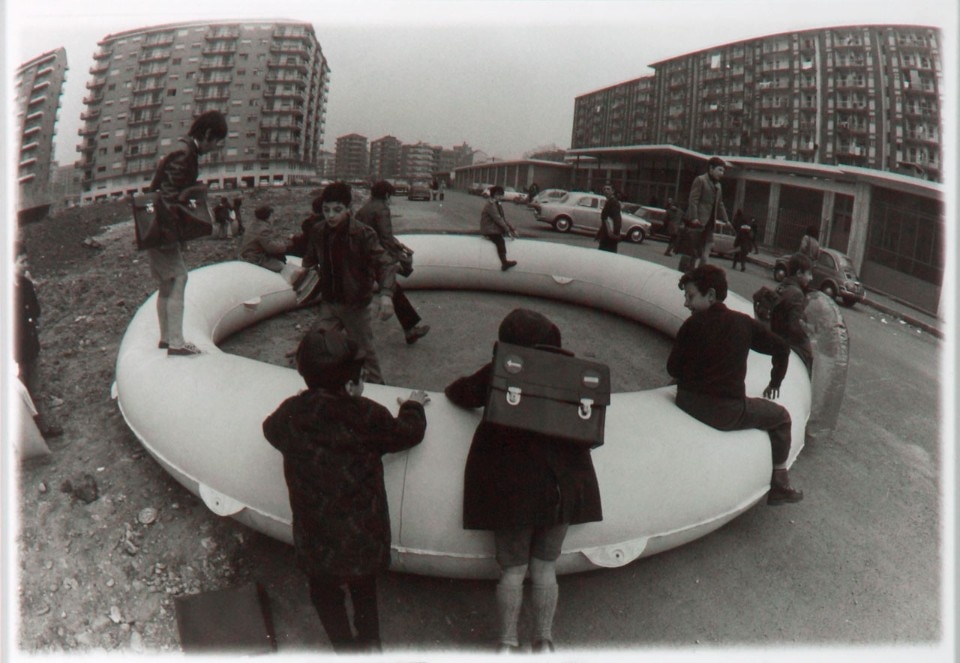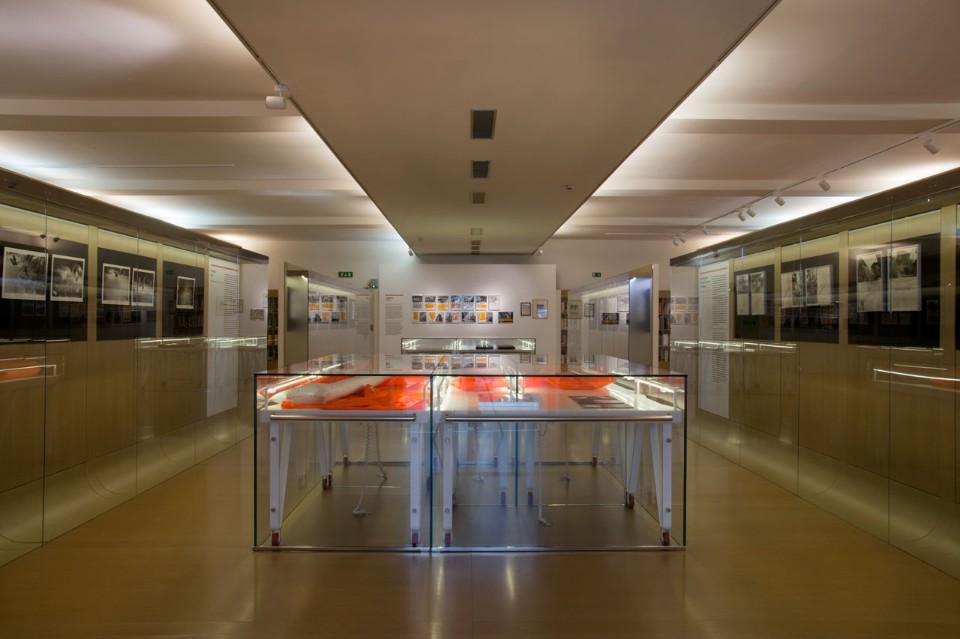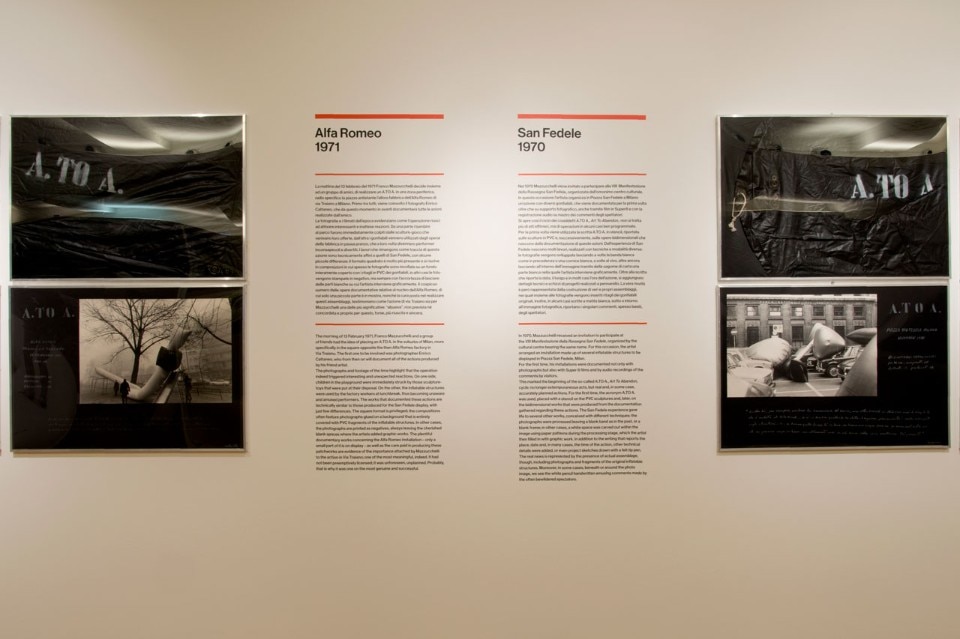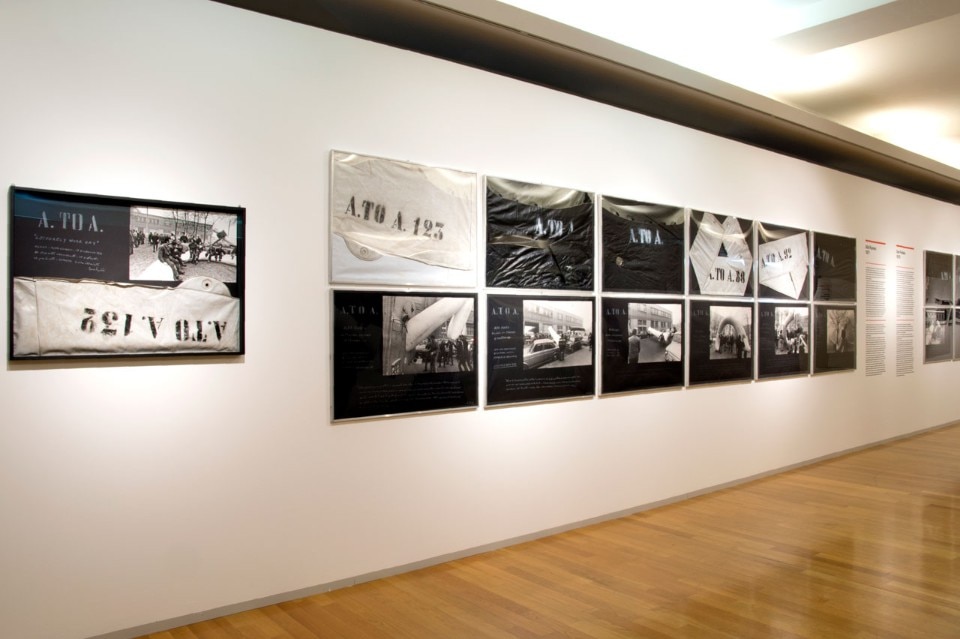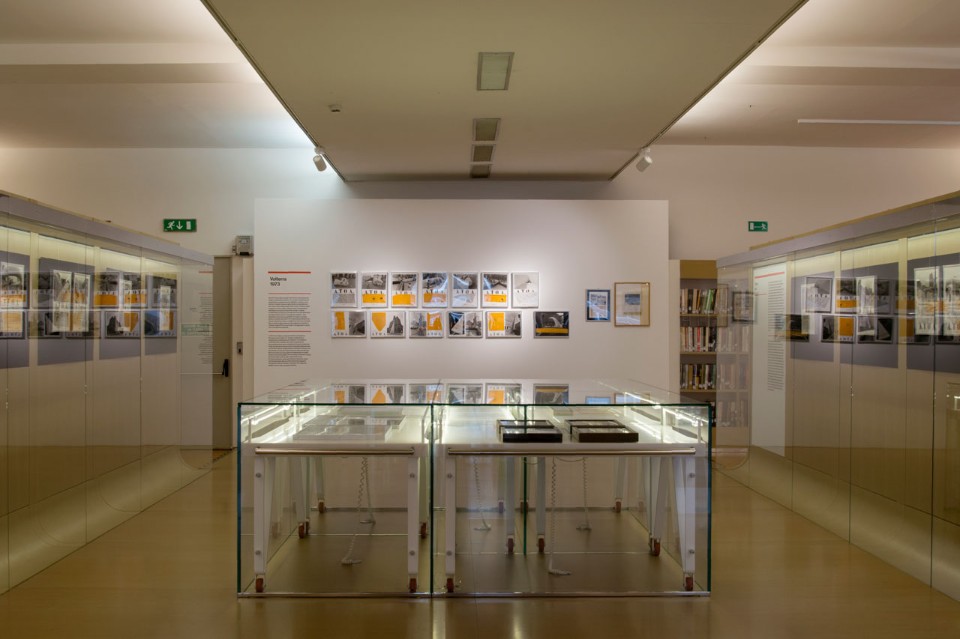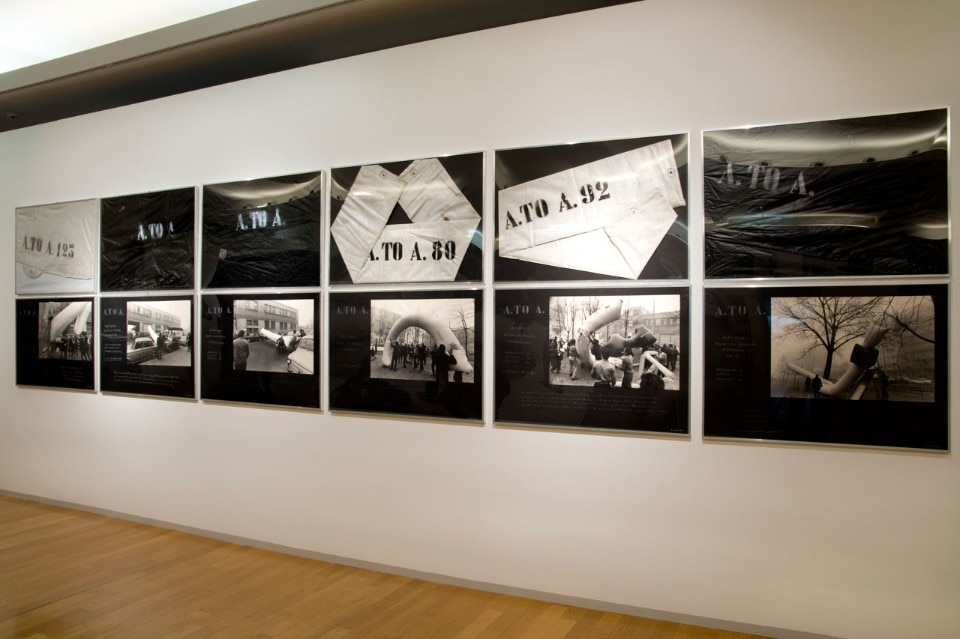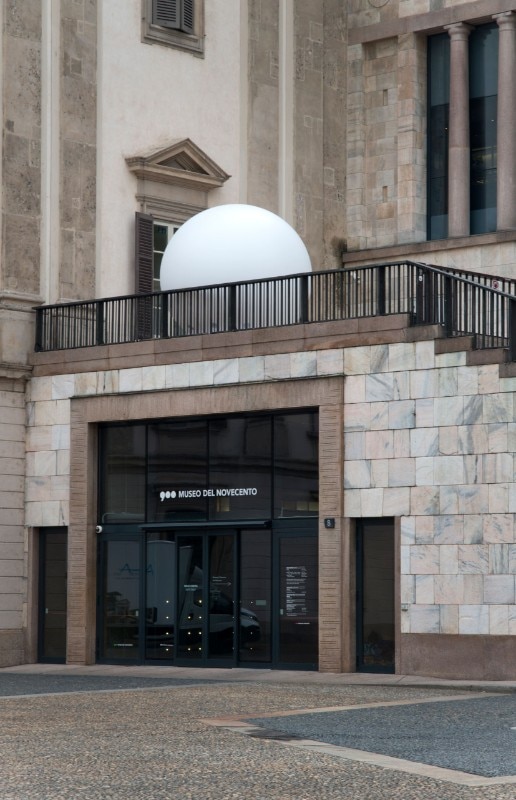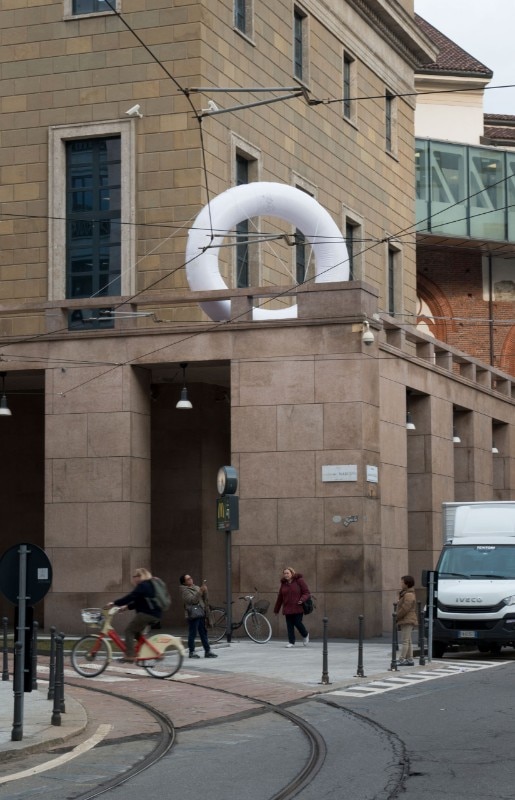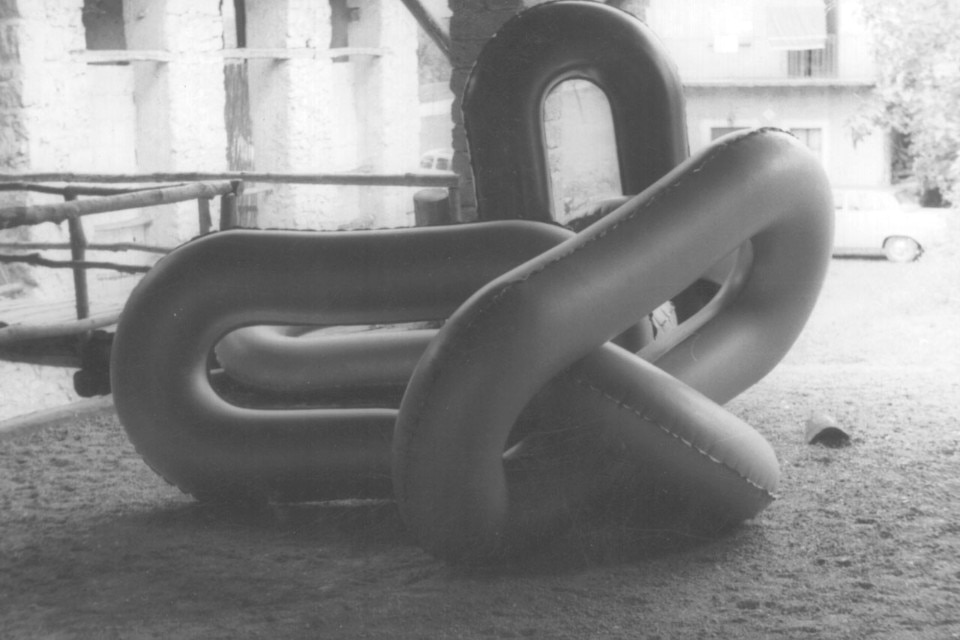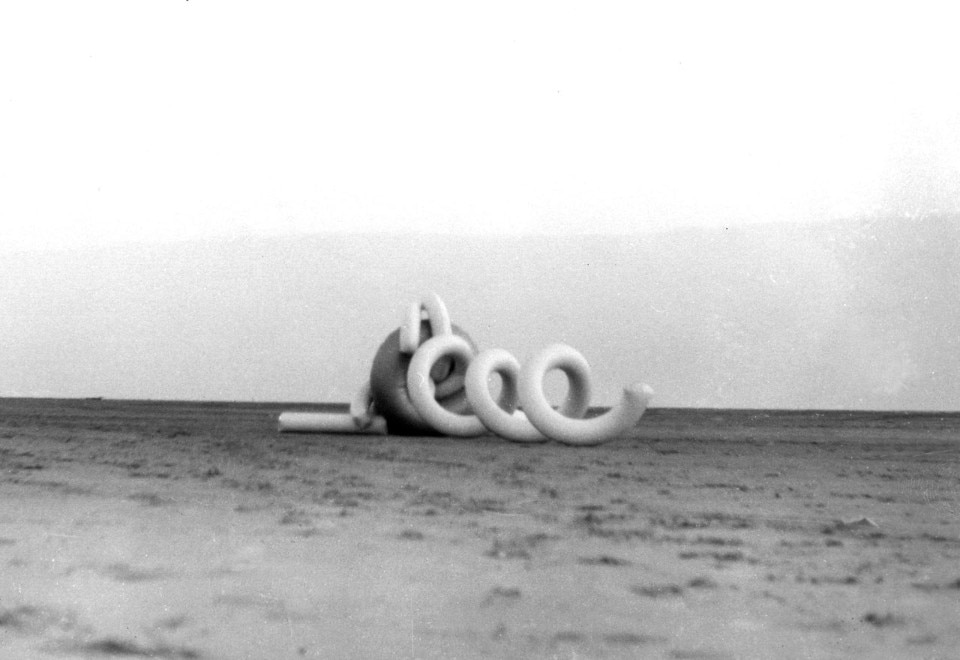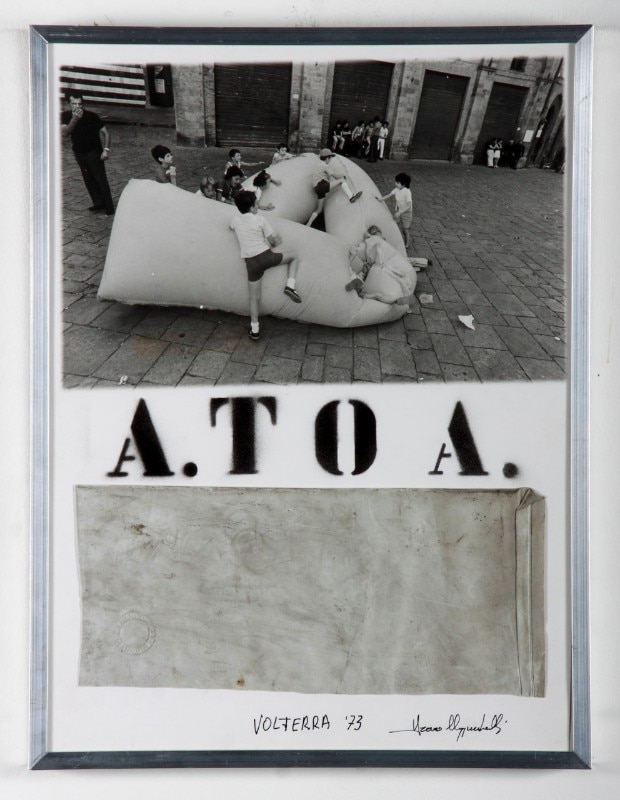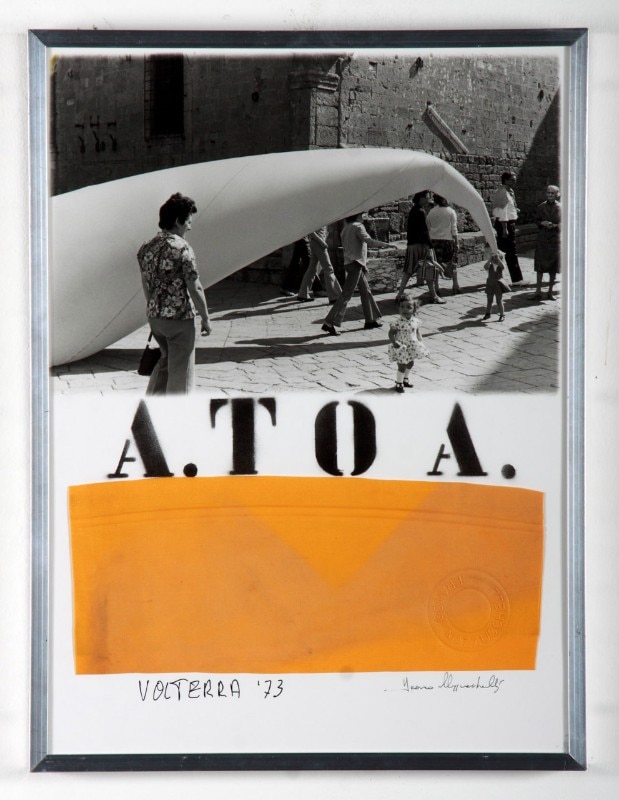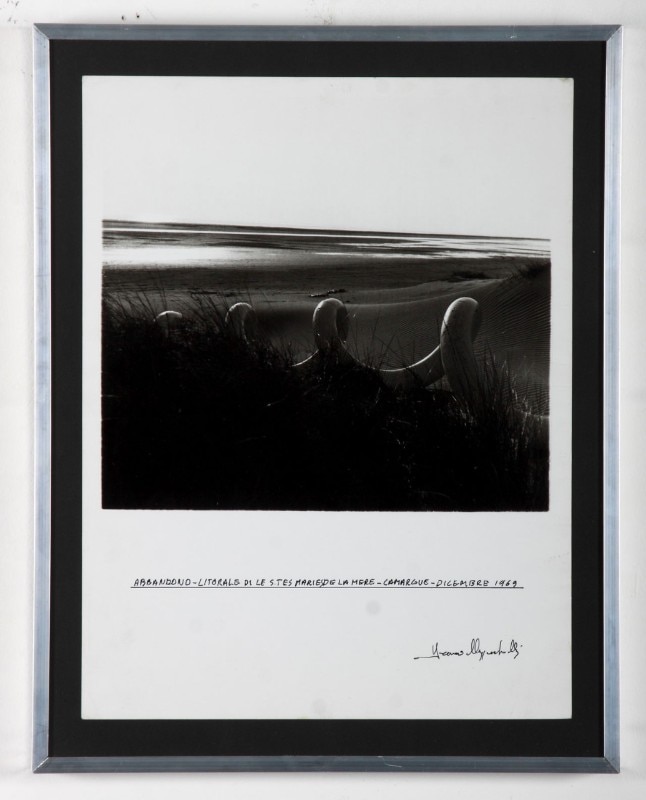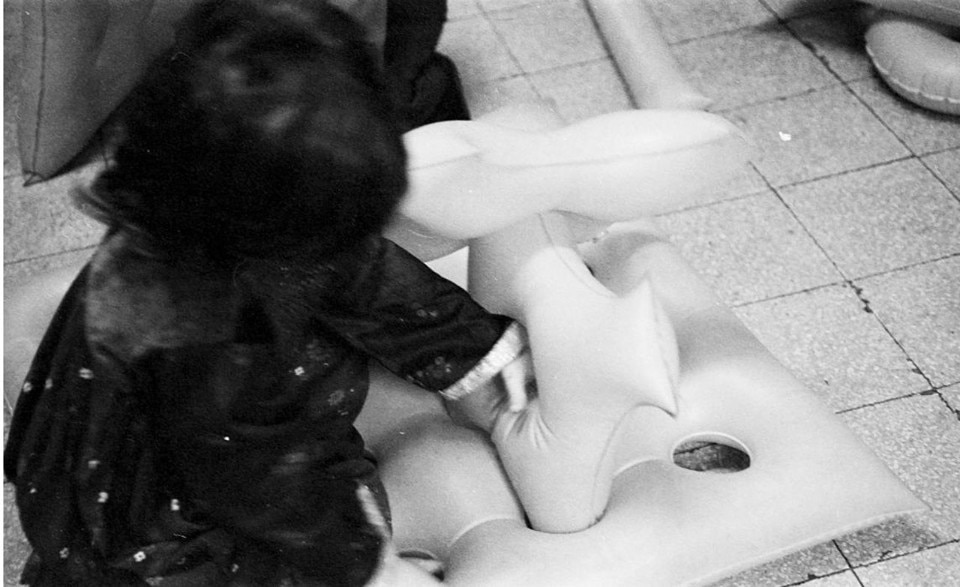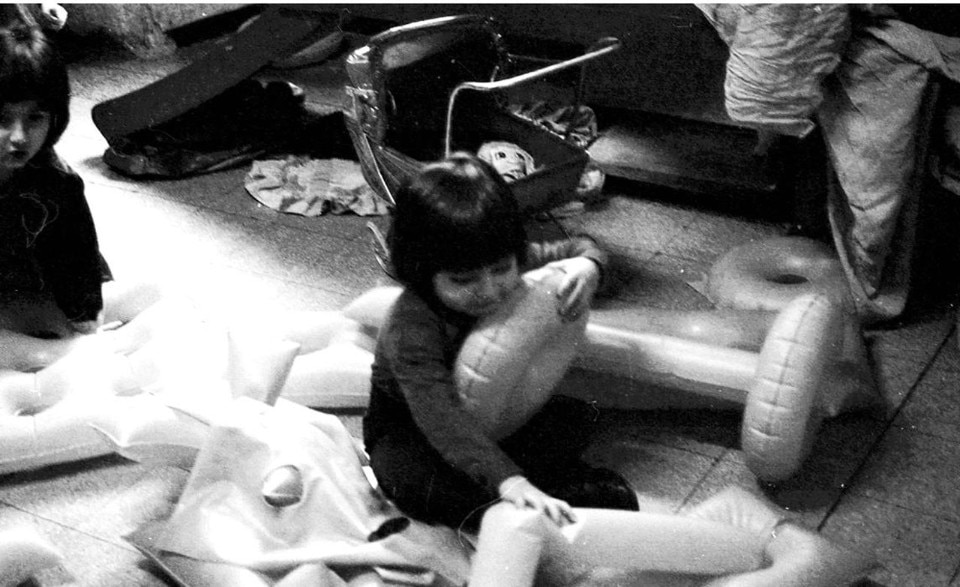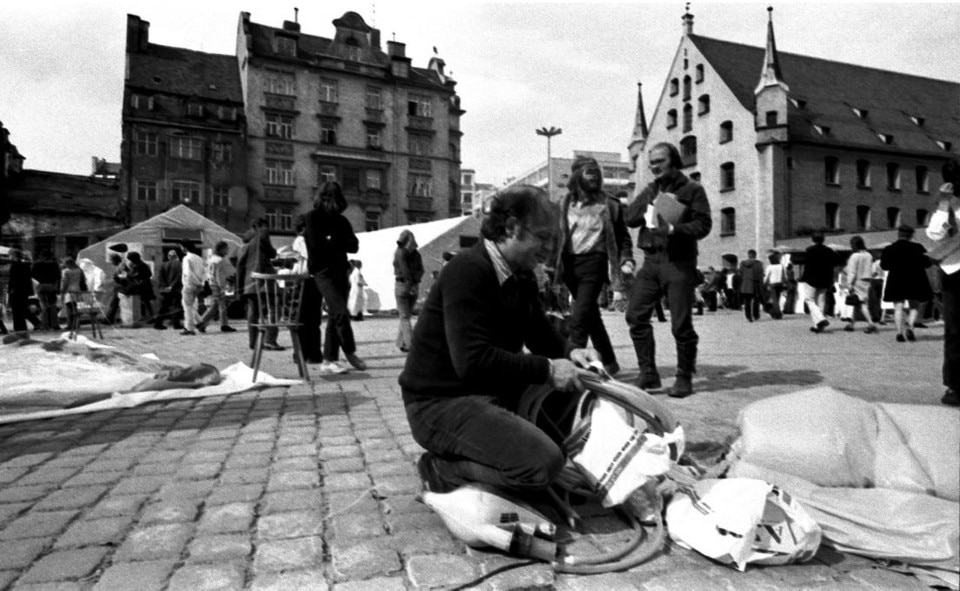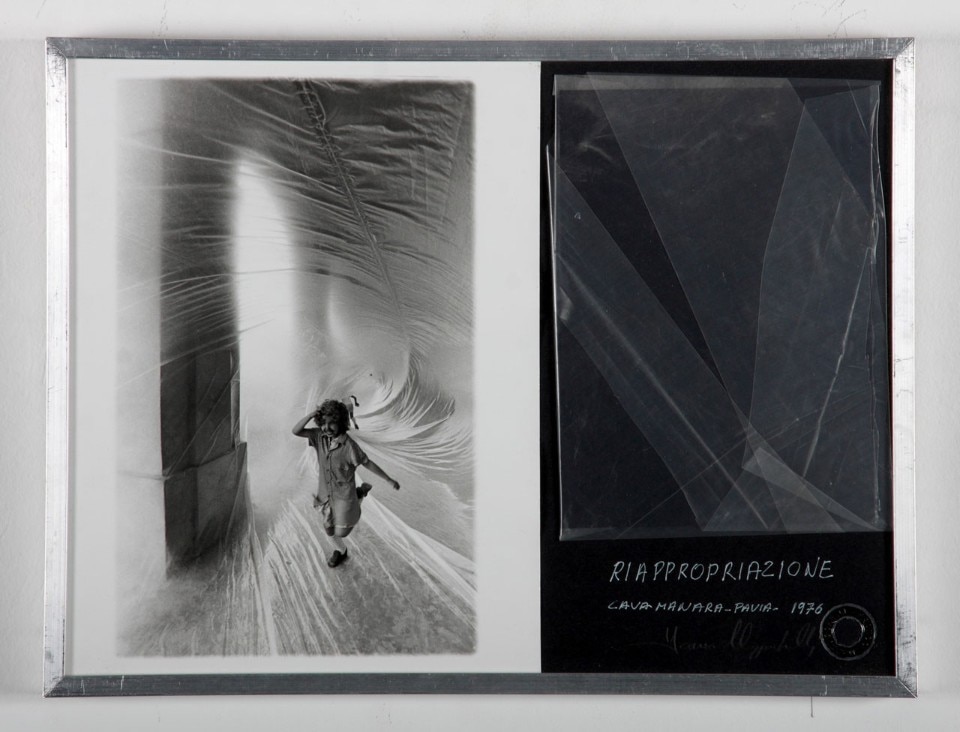The image chosen for the poster advertising the exhibition of Franco Mazzucchelli at the Museo del Novecento in Milan is a black and white photograph of a suburban area. One can see anonymous blocks of flats (the picture was taken in Turin in 1971) and, in the centre, an enormous white inflatable ring. It is surrounded by schoolchildren in uniform, with their satchels. In the foreground, the bag on the back of a little girl stands out for the two small road signs sewn above the buckles: a blue circle with a white arrow, (obligatory direction) and a red circle with a white strip (no entry).
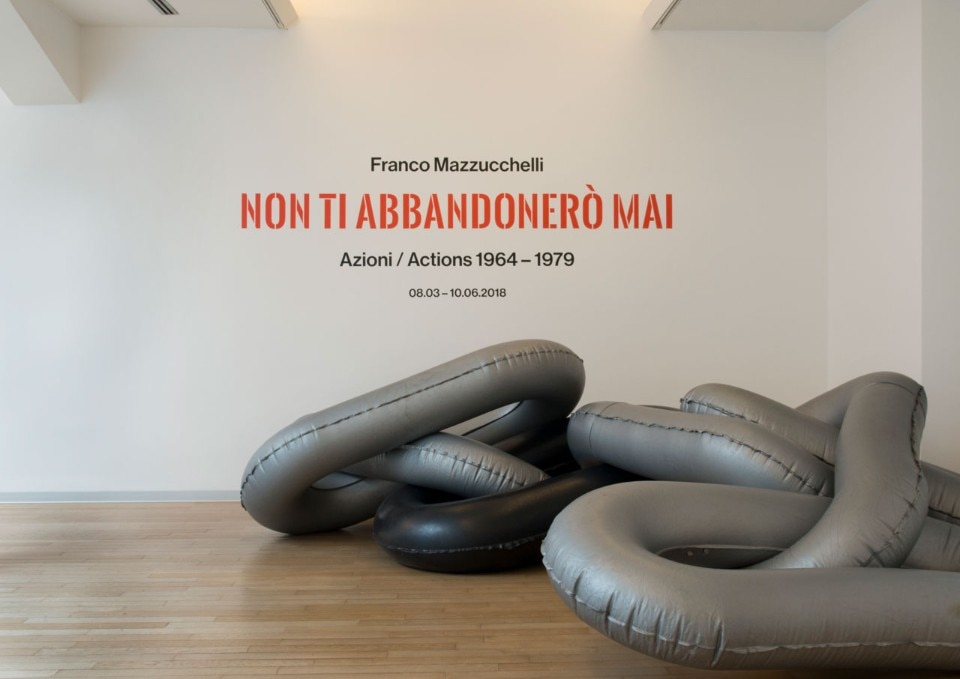
Mazzucchelli’s work (here immortalised in a series of documentary photographs and the remains of works brought together from between 1964 and 1979 and exhibited for the first time) – which, put simply, consists in blowing air into large plastic inflatable objects, mostly black or white, in the shape of spirals, spheres or rings (like those parked on the roof of the museum), and then abandoning them in a square or a park (the origin of their eloquent name: Abandonments), and then have it circulate in transparent polyethylene structures (Substitutionsand Reappropriations) - communicates, above all to those of us who find ourselves experiencing a public space enclosed in glass, pressed between obligations and prohibitions, where even an abandoned rucksack is cause for alarm, the idea of a world which is live, accessible and practicable.
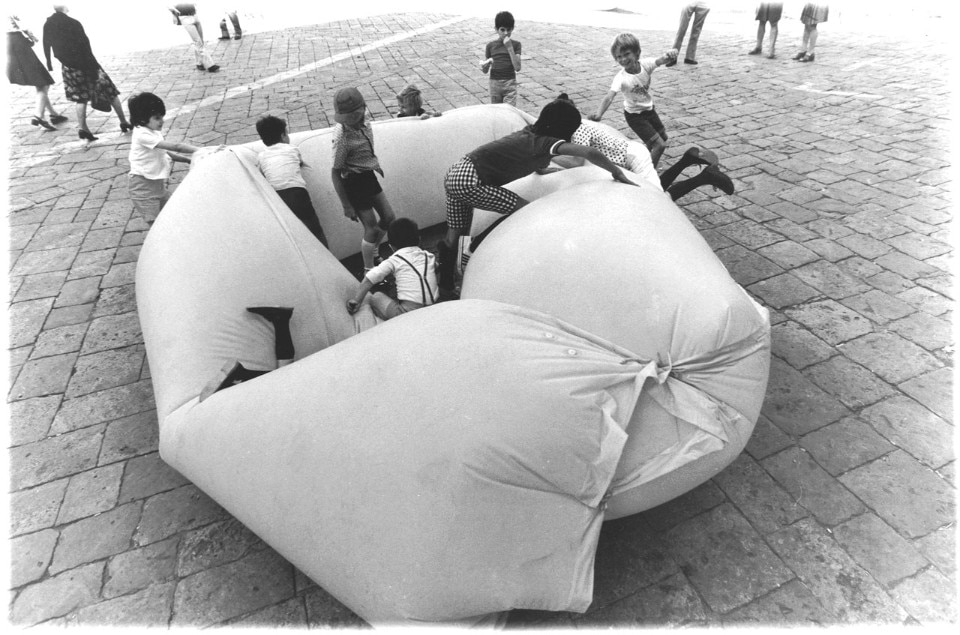
This openness allows Mazzucchelli to imagine a landscape for courtship, through a gesture which he qualifies with the name “abandonment” (he quickly found the formula A.TO.A, art to abandonfor his inflatables), a word which communicates a sense, according to its definition, of something brutal in its cutting off of all relationships of cohabitation and responsibility. There is also a sense of negotiability, as the curators of the exhibition, Iolanda Ratti and Sabino Maria Frassà, are eager to communicate, underlining the social and anti-commercial role of this “abandoned” art- it should be said, without any hint of controversy (in fact, the artist’s work was recently the subject of a one-man-show at the ChertLüdde gallery in Berlin, and in June it will be presented at the Art Basel Future Fair).
The full scope of Mazzucchelli’s actions was already evident, above all, in his first abandonment (which took place, significantly, at night). It was 26 May 1964, the artist was 25 years old, and found himself in Saintes-Marie-de-la-Mer with his uncle, who was making a film. When darkness fell, he inflated a sort of white plastic helix, which he left in the square. The photographs of this action open the exhibition: it is the middle of the night, the square is empty. In its shadowy solitude, the inflatable has a certain alien quality. A few months later, Mazzucchelli returned to the small town in the Camargue, this time with his wife Giovanna, and abandoned another spiral inflatable on the deserted beach (it was the middle of the winter. Giovanna is in one of the photographs, in another a horse can be seen, but it is clear how the work had not yet become that instrument which catalyses a presence within a regime of predictability which was to later define its character.
It took until 1970 for this to take form, with the action in Piazza San Fedele in Milan, and the one, the following month, in Via Traiano, again in Milan (the native city of the artist), in front of the Alfa Romeo factory. Here dozens of inflatables, initially abandoned in a playground, were courted and taken hostage by a number of workers on their lunch break, who threw them around, laughing. The adult becomes a child: they play. The inflatable is the ball which makes this play possible. An element of mediation and cruelty (it deceives us), of circulation of desire. Its large dimensions make us small again.
The function of the work seems to be that of provoking the existence of a network of relationships, created to combat the anxiety of abandonment. The situation which is created (and this exhibition is constructed entirely around this form of monitoring) seems a little like those experiments in which the theory of attachment examined the relationships between mother and son following a separation (a typical case studied is the “first day at school”, which is why the poster image is so well chosen). The artist claims to abandon his work, yet he does not leave (hence the title of the exhibition “I will never abandon you”and opens with nothing less than an inflatable in the form of a chain). Instead he remains to observe, photograph, film; he records the voices that emerge around the object, he transcribes them. He returns to take it back. The exhibition shows a number of so-called “survivor” inflatables, or that which remains of their old skin.
The word “survivor” and the word “prisoner” (Mazzucchelli speaks of the air in the inflatables as “imprisoned air”), through their forcing of an organic behaviour within an inert matrix, introduce the exhibition that the artist presented in 1972 at the Diagramma Gallery, entitled Caduta di pressione [drop in pressure],which was composed of various works, all shown here: the barometer which measured the air removed from the room by each visitor that entered; the table which showed the calculations of the amount of oxygen consumed; the reports on experiments conducted on Jewish prisoners during the war in decompression chambers (“until their lungs exploded”). One’s attention is captured by series of self-portraits which show Mazzucchelli with his mouth and nose blocked by tubes and plastic objects, preventing him from breathing. Here in place of the inflatable, space is dedicated to the man, and to a reflection on the tragically brief life of both.
- Exhibition title:
- Non ti abbandonerò mai. Franco Mazzucchelli, azioni 1964-1979
- Opening dates:
- 4 March – 10 June 2018
- Venue:
- Museo del Novecento
- Address:
- piazza Duomo, Milan
- Curators:
- Iolanda Ratti, Sabino Maria Frassà


